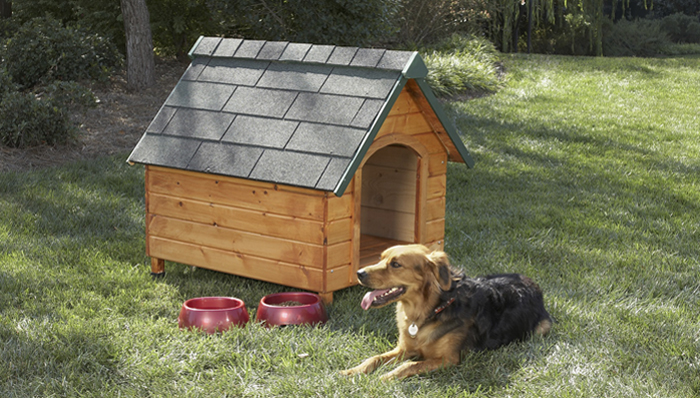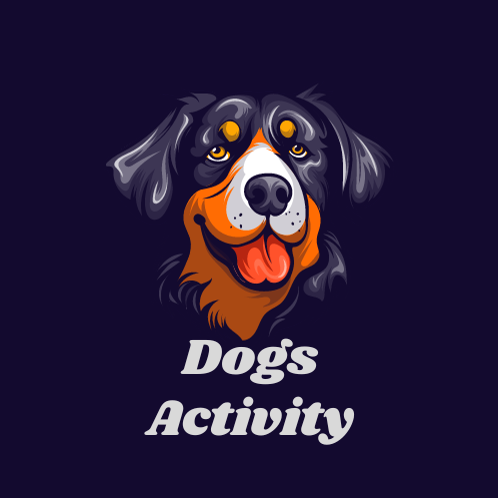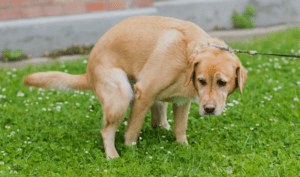
Introduction:
Providing a comfortable and secure shelter for our furry companions is a fundamental aspect of responsible pet ownership. Building a dog house not only offers a cozy retreat for our canine friends but also serves as a creative and rewarding DIY project for pet owners. In this extensive guide, we will explore the world of dog house plan
, covering everything from design considerations to step-by-step construction, ensuring that the process is both enjoyable and beneficial for both you and your beloved dog.
- Understanding the Importance of a Dog House:
Before delving into the intricacies of designing and building a dog house, it’s essential to recognize the significance of providing a dedicated space for your dog. A well-designed dog house offers:
a. Shelter from the Elements: Protecting your dog from harsh weather conditions, be it scorching heat or chilly winds, is crucial for their well-being.
b. Comfort and Security: Dogs, by nature, seek a sense of security and a space they can call their own. A well-constructed dog house provides a private retreat where they can rest and relax.
c. Outdoor Independence: A dog house allows your pet to enjoy the outdoors while having a designated area to retreat to when needed.Understanding these aspects lays the foundation for creating a dog house that meets your dog’s specific needs.
- Choosing the Right Dog House Plans:
Selecting the appropriate dog house plans is a crucial first step in this DIY venture. Consider the following factors when choosing a plan:
a. Size and Breed Considerations: The size of your dog and their breed influence the dimensions of the dog house. It should be spacious enough for your dog to move comfortably and stretch out.
b. Climate and Location: The local climate plays a significant role in the design. Consider insulation for colder climates and ventilation for warmer areas. The location of the dog house in your yard is also essential for your dog's comfort.
c. Skill Level: Choose plans that align with your woodworking skills. Some plans may be more suitable for beginners, while others may require more advanced techniques.
d. Materials: Dog house plans often come with recommendations for materials. Consider factors such as durability, weather resistance, and ease of maintenance when choosing materials.- Basic Components of Dog House Plans:
Dog house plans typically include several key components. Understanding these elements will help you navigate the construction process:
a. Foundation: The base of the dog house, which provides stability and elevates the structure off the ground.
b. Walls: The walls form the structure of the dog house and should be designed to provide insulation and protection from the elements.
c. Roof: A weather-resistant roof is essential for shielding your dog from rain, snow, and excessive sunlight.
d. Entrance: The entrance should be appropriately sized, allowing your dog to enter and exit comfortably.
e. Ventilation: Proper ventilation ensures air circulation, preventing the dog house from becoming too hot or stuffy.
f. Insulation: In colder climates, insulation is crucial to keep your dog warm during chilly seasons.Understanding how these components work together will guide you in choosing or adapting dog house plans to suit your specific requirements.
- Common Types of Dog House Plans:
There are various styles and designs of dog houses to choose from. Some common types include:
a. Traditional A-Frame: This classic design resembles a traditional house with a peaked roof, providing simplicity and ease of construction.
b. Duplex Dog House: Ideal for multiple dogs or larger breeds, the duplex design features two separate compartments within a single structure.
c. Porch or Deck Addition: Some plans include a porch or deck area, offering an outdoor space for your dog to lounge.
d. Customizable Plans: For those with specific design preferences, customizable plans allow you to add personal touches and tailor the dog house to your liking.Explore the various types of plans available to find one that aligns with your vision and meets your dog’s needs.
- Materials for Building a Dog House:
Choosing the right materials is a critical aspect of constructing a durable and weather-resistant dog house. Common materials include:
a. Wood: A popular choice due to its insulation properties and aesthetic appeal. Cedar and redwood are particularly resistant to insects and decay.
b. Plastic: Lightweight and easy to clean, plastic is a practical choice for dog houses. Ensure that the plastic is durable and UV-resistant.
c. Metal: Metal dog houses are sturdy and resistant to chewing but may require insulation in extreme temperatures.
d. Insulation Materials: Adding insulation, such as foam board or reflective insulation, is essential for maintaining a comfortable temperature inside the dog house.Consider your budget, the local climate, and your dog’s behavior when selecting materials.
- Step-by-Step Construction Process:
Once you have selected the right dog house plans and gathered your materials, the construction process involves several key steps:
a. Preparing the Site: Choose a level area in your yard and clear any debris. Ensure proper drainage to prevent water accumulation.
b. Building the Foundation: Construct the base of the dog house, ensuring stability and elevation to prevent moisture-related issues.
c. Assembling the Walls: Follow the plans to assemble and attach the walls, leaving space for the entrance and any windows or ventilation openings.
d. Adding the Roof: Install the roof, ensuring it is weather-resistant and securely attached to the walls.
e. Finishing Touches: Add insulation, if needed, and consider painting or sealing the dog house for added protection. Place bedding or padding inside for comfort.
f. Personalization: Consider adding personal touches, such as your dog's name or decorative elements, to make the dog house uniquely yours.- Dog House Maintenance:
Maintaining your dog house ensures its longevity and continued comfort for your pet. Regular maintenance tasks include:
a. Cleaning: Keep the dog house clean by removing debris, dirt, and any accumulated waste.
b. Inspecting for Damage: Regularly check for signs of wear and tear, including loose joints, damaged roofing, or any areas that may need repairs.
c. Replacing Bedding: If you use bedding inside the dog house, replace it regularly to ensure cleanliness and comfort.
d. Repainting or Sealing: Depending on the material used, consider repainting or resealing the dog house to protect it from the elements.A well-maintained dog house not only provides a comfortable space for your pet but also reflects your commitment to their well-being.
- Considerations for Extreme Weather:
In regions with extreme weather conditions, additional considerations are necessary to ensure your dog’s safety and comfort:
a. Insulation: Adequate insulation, such as foam board or reflective materials, is crucial for maintaining a stable temperature inside the dog house.
b. Raised Flooring: Elevating the dog house slightly helps prevent moisture fromseeping in during heavy rainfall or snow.
c. Windbreaks: If your location experiences strong winds, consider adding windbreaks or positioning the dog house in a way that minimizes exposure.
d. Cooling Solutions: In hot climates, provide shade and consider using materials that reflect sunlight to prevent the dog house from overheating.Tailoring the dog house to the specific weather conditions in your area ensures that your dog remains comfortable throughout the year.
- Adding Functional and Aesthetic Features:
Enhancing the functionality and aesthetics of the dog house can make it more appealing for both you and your pet:
a. Window Openings: Including windows or openings can improve ventilation and provide natural light.
b. Removable Roof: A removable roof facilitates cleaning and maintenance tasks, making it easier for pet owners.
c. Color Choices: Opt for colors that complement your outdoor space and consider using non-toxic paint or sealant.
d. Custom Signage: Personalize the dog house with a sign displaying your dog's name or a fun message.Adding these features allows you to express creativity while ensuring the dog house aligns with your overall outdoor aesthetic.
- DIY Dog House Kits:
For those who prefer a simplified approach, DIY dog house kits are available and can streamline the construction process. These kits typically include pre-cut materials and detailed instructions, making it easier for beginners to build a functional and sturdy dog house.
a. Ease of Assembly: DIY kits are designed for ease of assembly, making them suitable for individuals with varying levels of woodworking experience.
b. Customization Options: Some kits allow for customization, enabling pet owners to add personal touches while following a structured plan.
c. Materials and Durability: Choose a kit with durable materials to ensure the longevity of the dog house.DIY kits offer a convenient and accessible option for pet owners looking to embark on a dog house project with confidence.
- Safety Considerations:
Ensuring the safety of your dog is paramount when constructing a dog house. Consider the following safety guidelines:
a. Non-Toxic Materials: Use materials that are safe for dogs and free from toxic substances.
b. Secure Construction: Ensure that the dog house is sturdy and securely assembled to prevent accidents or collapses.
c. Avoid Sharp Edges: Sand or round off any sharp edges to minimize the risk of injuries.
d. Proper Ventilation: Adequate ventilation is essential to prevent the buildup of heat and ensure a constant supply of fresh air.Prioritizing safety in the design and construction phases guarantees that your dog’s new home is a secure and welcoming space.
- Creating a Dog-Friendly Environment:
Integrating the dog house into a dog-friendly environment enhances its appeal and functionality:
a. Outdoor Play Area: Designate an area around the dog house for your dog to play, ensuring it is safe and secure.
b. Shade and Shelter: Provide additional shading or sheltered areas for your dog to enjoy, creating a comfortable outdoor space.
c. Landscaping: Incorporate landscaping elements that complement the dog house, such as plants or decorative features.By creating a harmonious environment, the dog house becomes an integral part of your outdoor space while catering to your dog’s needs.
- Elevating Aesthetics:
The aesthetics of your dog house can be elevated through thoughtful design elements. Consider architectural details, such as decorative trim or a charming porch, that not only enhance the visual appeal but also add a touch of sophistication to your furry friend’s abode. By incorporating aesthetics into the design, the dog house becomes a seamless addition to your outdoor space, blending functionality with style.
a. Color Palette: Choose a color palette that complements your home and outdoor surroundings. Coordinating the dog house with existing structures creates a cohesive and visually pleasing environment.
b. Personalization: Adding personalized touches, such as a nameplate or custom signage, brings character to the dog house. This not only serves a functional purpose but also establishes a sense of ownership for your pet.
c. Landscaping Integration: Integrate landscaping elements around the dog house to create a harmonious outdoor space. Consider planters, flower beds, or vines that enhance the overall aesthetic appeal.By approaching the design process with an eye for aesthetics, the dog house becomes a statement piece within your yard, reflecting your attention to detail and commitment to creating a visually appealing space for your pet.
- Sustainable Construction:
Incorporating sustainable practices into the construction of your dog house aligns with a growing commitment to environmental consciousness. Consider using eco-friendly materials, such as reclaimed wood or non-toxic finishes, to minimize the environmental impact. Additionally, explore options for energy-efficient features, such as reflective roofing materials, to regulate the temperature inside the dog house naturally.
a. Recycled Materials: Utilize recycled or upcycled materials for certain components of the dog house, reducing waste and contributing to sustainable building practices.
b. Green Roof Options: Explore green roof options, such as planting succulents or grass on the roof, to enhance insulation and contribute to environmental sustainability.
c. Solar-Powered Accessories: If applicable, consider incorporating solar-powered accessories, such as lighting or ventilation, to reduce reliance on traditional energy sources.By embracing sustainable construction practices, your dog house becomes a testament to responsible building, fostering a connection between pet ownership and environmental stewardship.
- Multi-Functional Design:
Taking a multi-functional approach to dog house plans adds versatility to the structure. Consider designs that incorporate storage space or a dual-purpose roof that can be utilized as an outdoor seating area for pet owners. This multi-functional aspect not only maximizes the utility of the dog house but also enhances its integration into the overall design of your outdoor space.
a. Storage Compartments: Include compartments within the dog house design for storing dog toys, leashes, or other pet-related items. This streamlines organization and keeps essential items easily accessible.
b. Convertible Features: Explore designs with convertible features, such as a foldable roof that transforms into a table or seating area. This innovative approach adds functionality beyond being a simple dog shelter.
c. Integrated Pet Care: Consider incorporating features that contribute to the overall care of your pet, such as built-in feeding stations or water dispensers.A multi-functional dog house becomes an integral part of your outdoor living space, offering practical solutions that cater to both your pet’s needs and your lifestyle.
- Safety Measures and Accessibility:
Prioritizing safety measures in the design of your dog house is crucial for your pet’s well-being. Pay attention to features that enhance accessibility and security:
a. Smooth Interior Surfaces: Ensure that the interior surfaces are smooth and free from sharp edges to prevent injuries to your dog. Sand any rough spots and round off edges during the construction process.
b. Secure Fastenings: Use secure fastenings for all components to prevent any parts from coming loose. This includes the roof, walls, and flooring, ensuring the structural integrity of the dog house.
c. Weatherproofing: Apply weatherproofing measures, such as sealing joints and adding weather strips, to protect the interior from moisture and drafts.Creating a safe and accessible environment within the dog house ensures that it remains a secure haven for your pet throughout various weather conditions.
- Educational Elements for Pet Owners:
In addition to serving as a practical shelter, your dog house can also include educational elements for pet owners. Incorporate information panels or guidelines on responsible pet ownership, such as feeding recommendations, grooming tips, or local veterinary resources. This educational aspect transforms the dog house into a hub of information, fostering awareness and knowledge within the community.
a. Pet Care Tips: Include informative panels that offer tips on grooming, nutrition, and exercise, providing valuable insights for pet owners.
b. Local Veterinary Contacts: Display contact information for local veterinary clinics or emergency pet services, offering a quick reference for pet owners in need.
c. Responsible Pet Ownership: Integrate messages promoting responsible pet ownership, such as spaying/neutering initiatives, licensing requirements, or adoption resources.By incorporating educational elements, the dog house becomes a community focal point that encourages responsible pet care practices and strengthens the bond between neighbors and their pets.
- Community Engagement and Events:
Transform your dog house into a community engagement hub by hosting pet-friendly events or activities. Consider organizing pet adoption drives, pet wellness check-up days, or pet-friendly gatherings that bring together local pet owners. This community-oriented approach not only enhances the social aspect for your pet but also contributes to a sense of camaraderie among neighbors.
a. Pet Adoption Events: Collaborate with local shelters to organize pet adoption events, creating opportunities for dogs to find loving homes.
b. Pet Wellness Days: Partner with veterinary professionals to offer pet wellness check-ups, vaccinations, or informational sessions within the community.
c. Pet-Friendly Gatherings: Arrange pet-friendly gatherings, such as doggy playdates or outdoor movie nights, creating a sense of community for both pets and their owners.By incorporating community engagement into the dog house’s design, you contribute to a pet-friendly neighborhood that prioritizes the well-being of all furry residents.
- Seasonal Considerations:
Adapting your dog house to different seasons ensures year-round comfort for your pet. Implement seasonal adjustments, such as removable insulation panels for winter and added ventilation options for summer, to create a versatile and adaptable living space.
a. Winter Insulation: Attach removable insulation panels to the walls and roof during colder months to provide additional warmth and protection from the elements.
b. Summer Ventilation: Incorporate adjustable vents or windows that can be opened during warmer seasons, promoting air circulation and preventing overheating.
c. Seasonal Decor: Embrace seasonal decor elements, such as festive banners or themed bedding, to add a touch of celebration and comfort throughout the year.By addressing seasonal considerations, the dog house becomes a flexible and accommodating space that caters to your pet’s needs regardless of the weather.
- Continuous Improvement and Innovation:
The world of pet care and design is ever-evolving, presenting opportunities for continuous improvement and innovation in dog house plans. Stay informed about new materials, construction techniques, and design trends that can enhance the functionality, durability, and aesthetic appeal of your dog house.
a. Smart Technology Integration: Explore the possibility of integrating smart technology, such as temperature-controlled features or surveillance cameras, to enhance the overall functionality of the dog house.
b. Innovative Materials: Stay updated on innovative and sustainable materials that contribute tothe durability and eco-friendliness of the dog house.
c. Collaboration with Designers: Consider collaborating with architects or designers who specialize in pet-friendly structures, bringing a professional touch to your dog house plans.By embracing a mindset of continuous improvement, your dog house becomes a dynamic project that evolves with advancements in pet care and design.
Conclusion:
In the expansive world of dog house plans, the journey from conceptualization to construction is a testament to the love and dedication pet owners invest in their furry companions. From foundational considerations to sustainable practices and community engagement, each aspect contributes to the creation of a dog house that goes beyond being a mere shelter. It becomes a symbol of responsible pet ownership, creativity, and a harmonious integration of pets into our daily lives.
As the bond between humans and dogs continues to flourish, the dog house remains a timeless expression of care and consideration. By following this comprehensive guide, pet owners embark on a fulfilling journey of crafting a haven that not only meets their dog’s practical needs but also enriches the overall quality of life for both pets and their loving owners.
In conclusion, the process of creating dog house plans transcends the physical construction of a structure. It encapsulates the values of compassion, responsibility, and a shared commitment to fostering a nurturing environment for our cherished canine companions.


